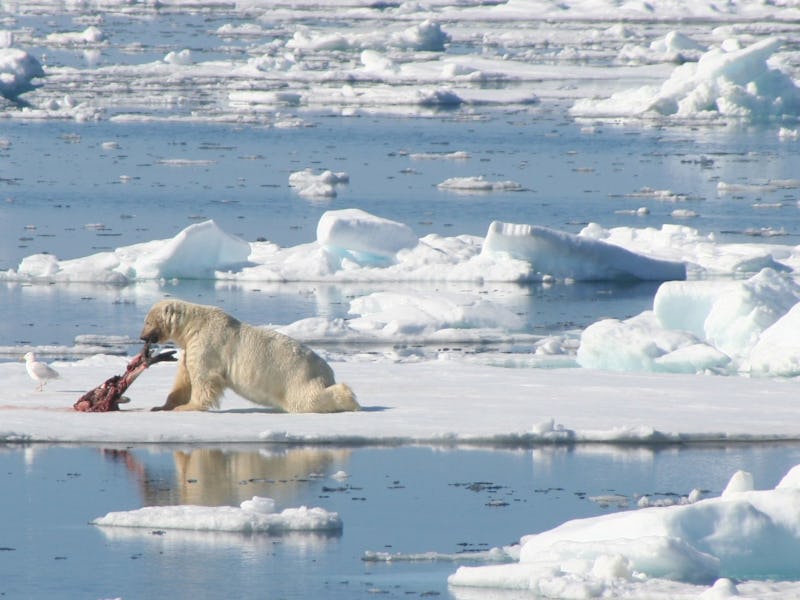Antarctica Lacks a Polar Bear-Style Predator Because Evolution Is Crazy Slow
The answer is not as straightforward as you think.

Everyone knows there are no polar bears in Antarctica. But if there were, they’d have a field day munching on those emperor penguins, who are big, slow, and not used to predation on land. So, given that the environment would seem to be conducive to a mammalian predator, why do none exist?
You may think the answer is obvious — bears evolved on the planet after Antarctica broke away from the other continents, and after that they had no easy way of getting there. This is true, but it’s also not the whole story.
See — Antarctica separated from Australia about 55 million years ago. At that point, both were teaming with mammal life. Convergent evolution dictates that distantly related animals will develop similar traits if they live in similar environments — it’s the reason Australia evolved a marsupial lion and a marsupial mole, even though the two are more closely related to each other than to the placental mammals they appear to mimic.
These guys are pretty stoked on their polar bear-free continent.
So why doesn’t some behemoth cousin of the koala now rule the south pole? What we know is that, at some point, the continent became too cold and barren to support terrestrial plant and animal life. The details are a matter of continued scientific debate, we know that there were mammals in Antarctica 40 million years ago, and that plant life may have existed there as recently as two million years ago (although very likely not continuously.)
With the land no longer able to support them, the former Antarctic mammals might have gone back to the ocean, as the ancestor of the seal once did elsewhere, or adapted to become more polar-bear like, using both land and sea for shelter and food. But this didn’t happen. Maybe there just weren’t enough marine species nearby to make a good meal, or maybe the mammals didn’t figure out how to hunt them effectively enough, soon enough.
The major evolutionary hurdle presented by Antarctica is isolation. Once terrestrial animals were wiped out by encroaching glaciers, there was really no way for them to return. Whereas the Arctic is contiguous with more southerly land masses, allowing the mighty polar bear and other species to slowly adapt to a harsh environment, the Antarctic stands alone. This begs a question: What if we were to help the polar bear along, transporting them to Antarctica to feast on seals and penguins, saving them from the perils of melting Arctic ice?
If past is prelude, things would go figuratively south in a hurry. Invasive species in general, and giant carnivores in particular, would wreak havoc on the delicate balance of an ecosystem like that in Antarctica. It’s hard to predict exactly how it would go down, but very likely the south-polar bear population would explode as they feast on easy penguin prey. The penguin population would then collapse, and be followed shortly by the bears.
Humans have done enough already with their ecosystem meddling. We even wiped out the original penguin, the great auk, a large flightless bird that roamed the North Atlantic until the mid-19th century.
And you thought there was no such thing as Arctic penguins.